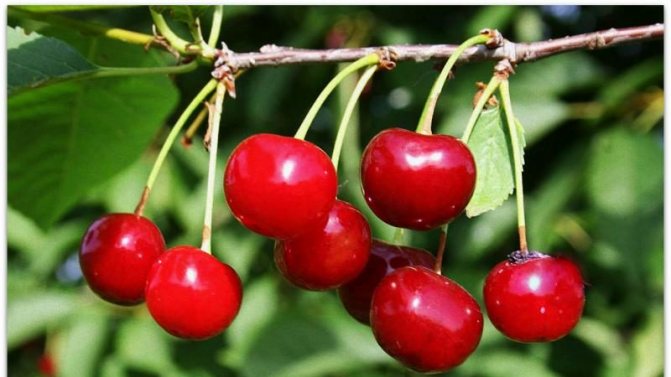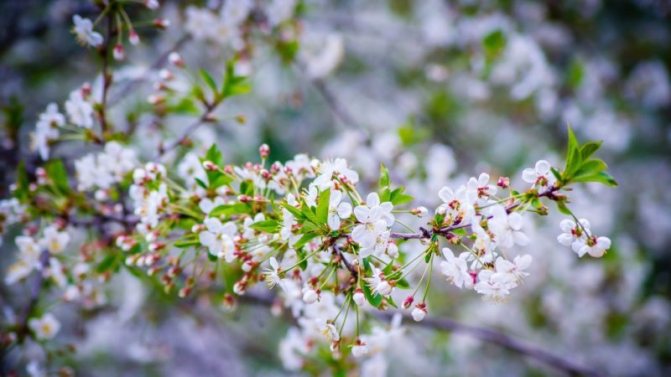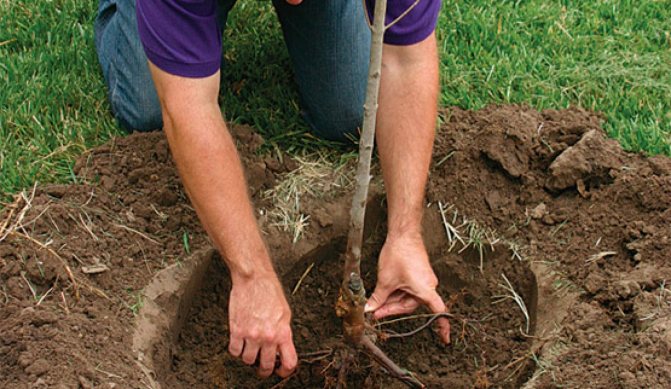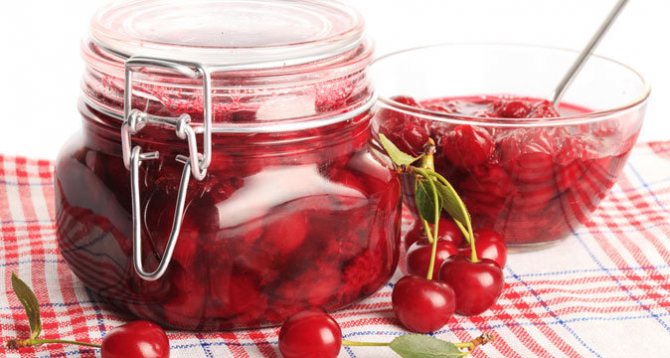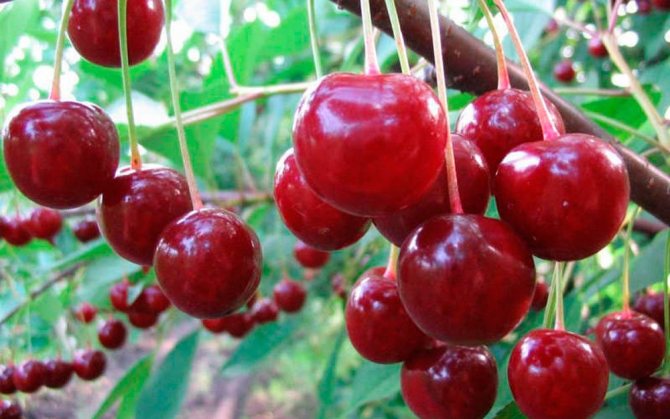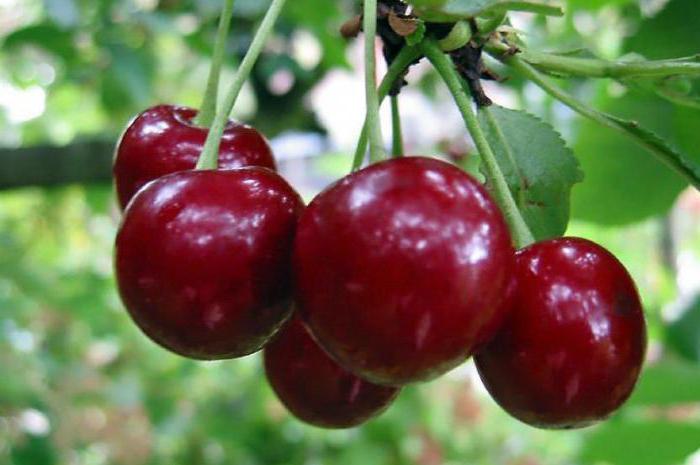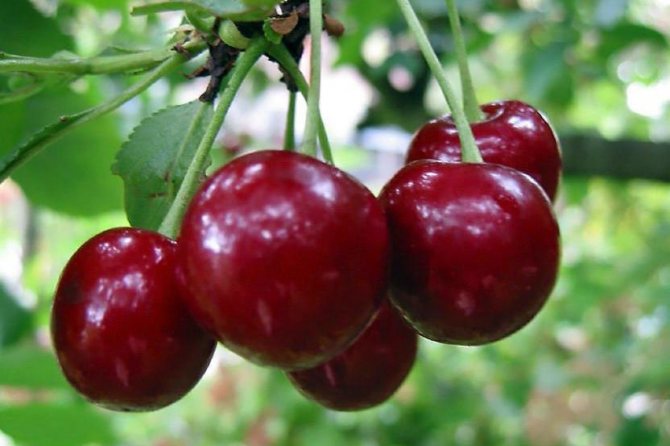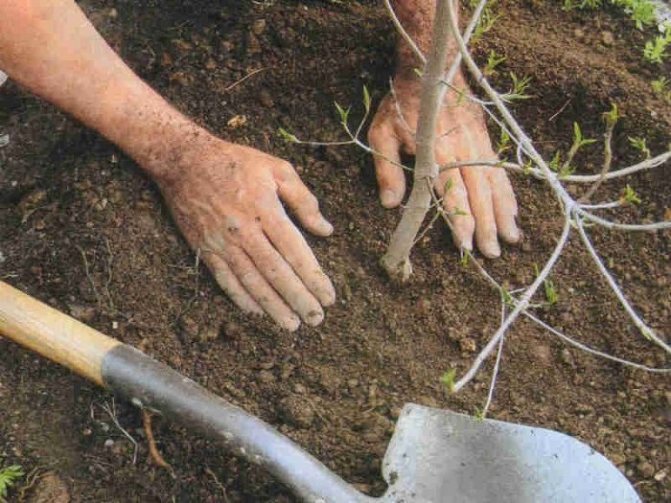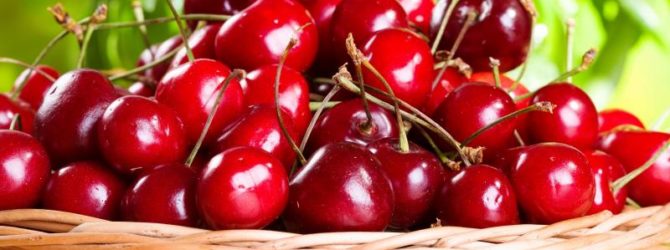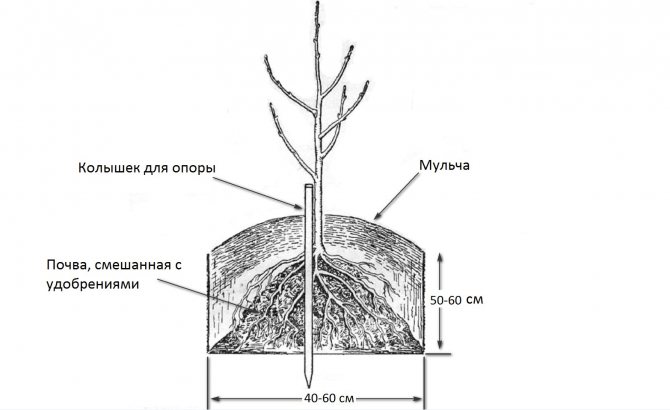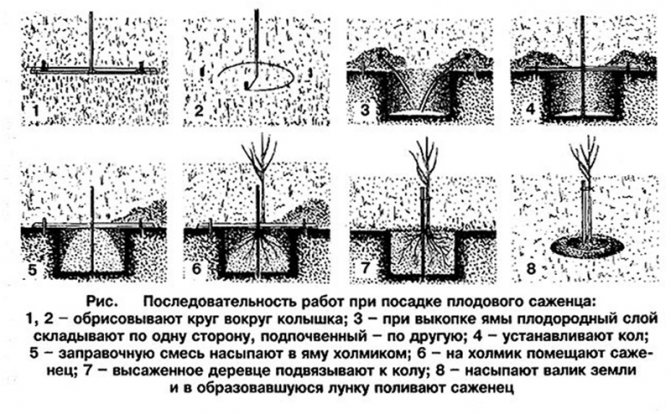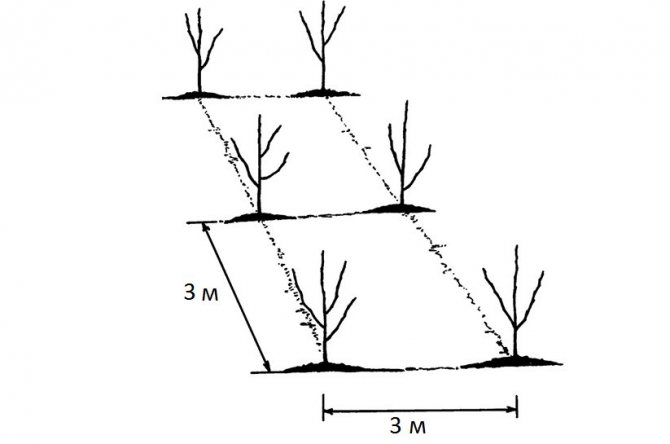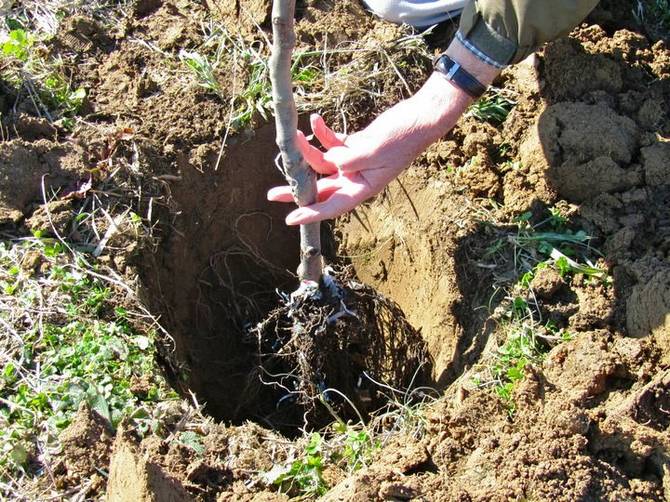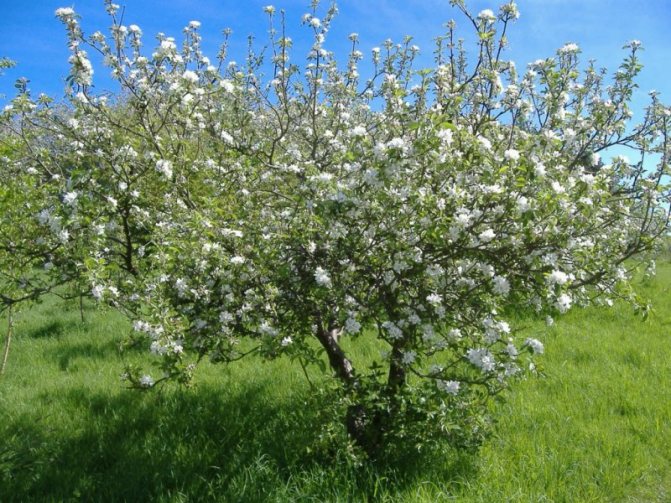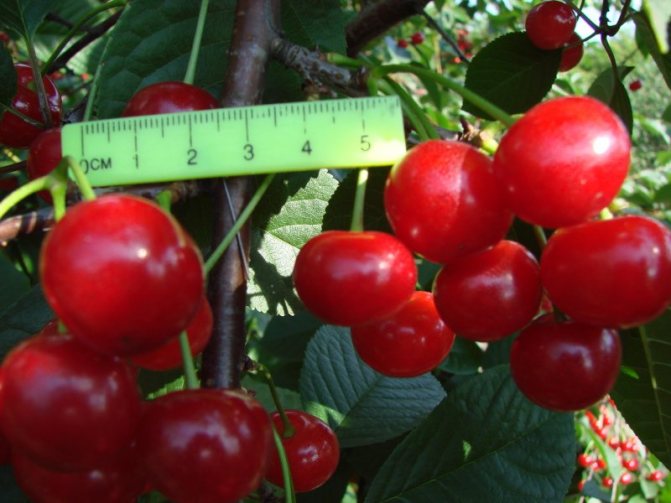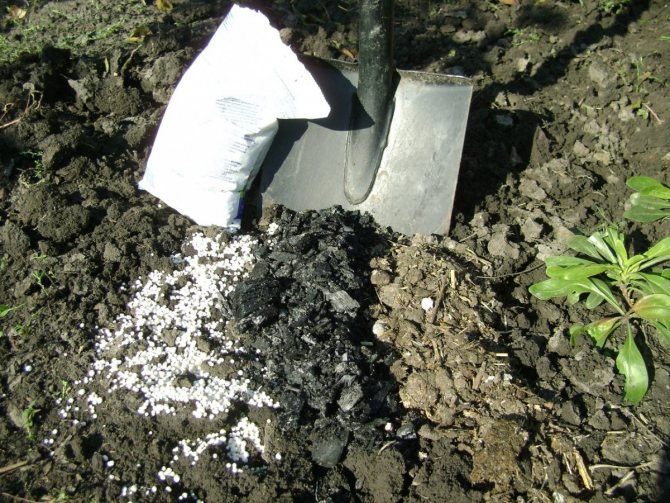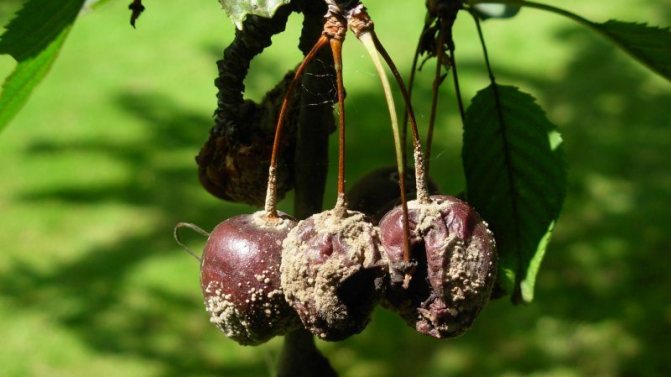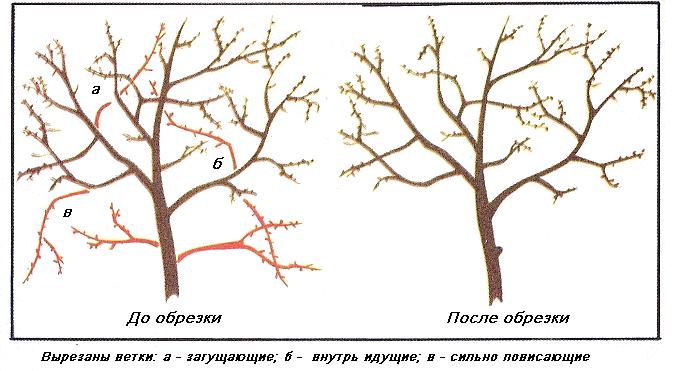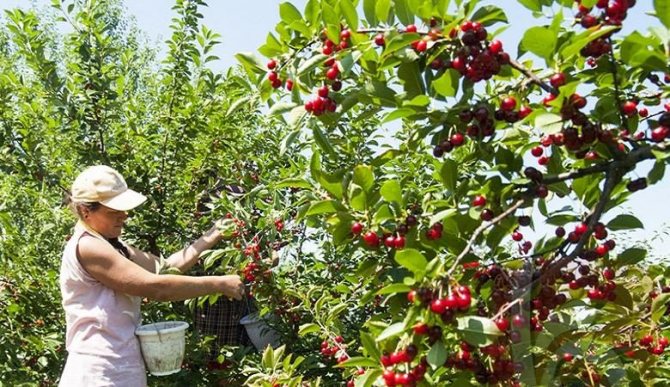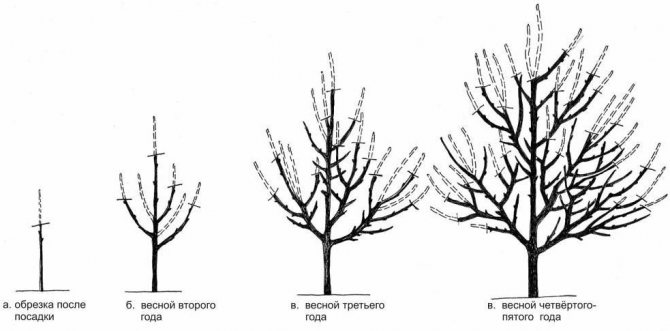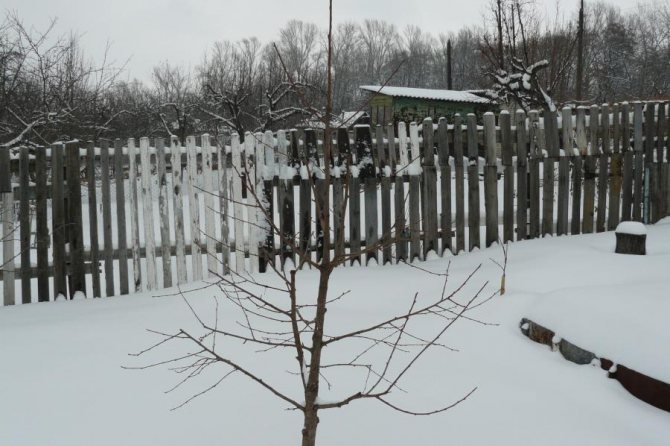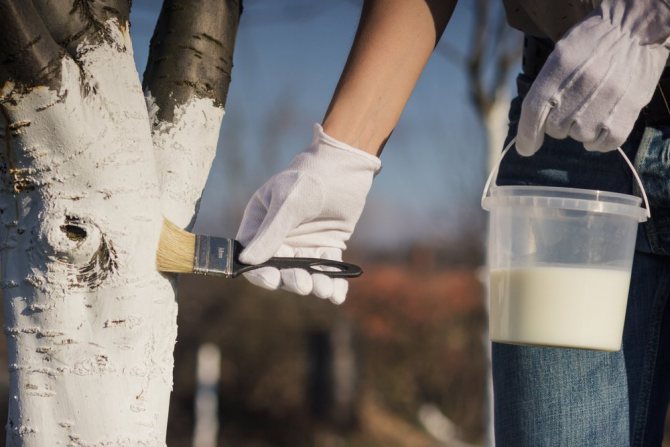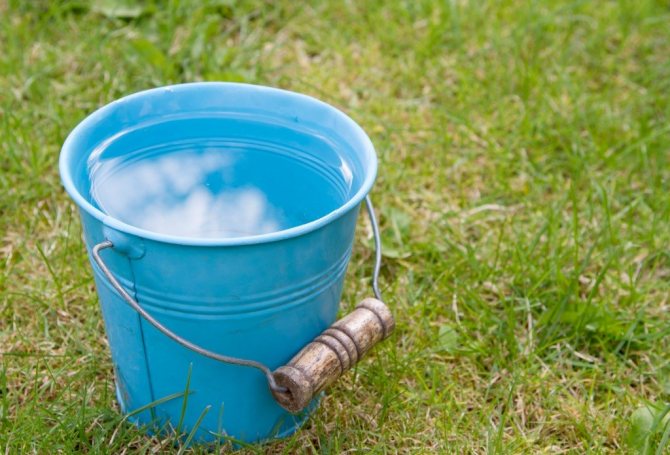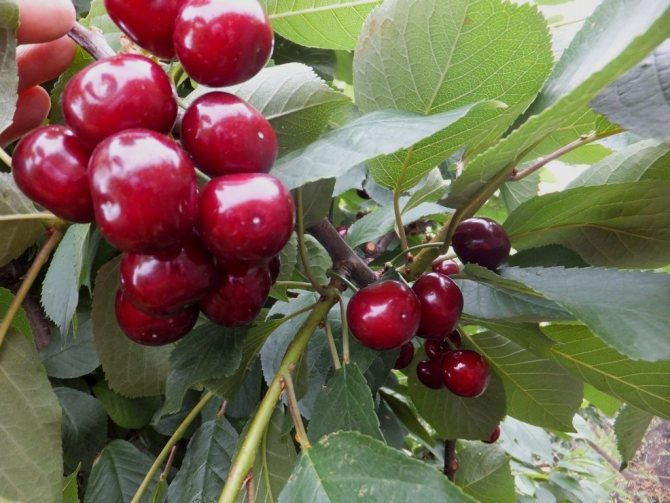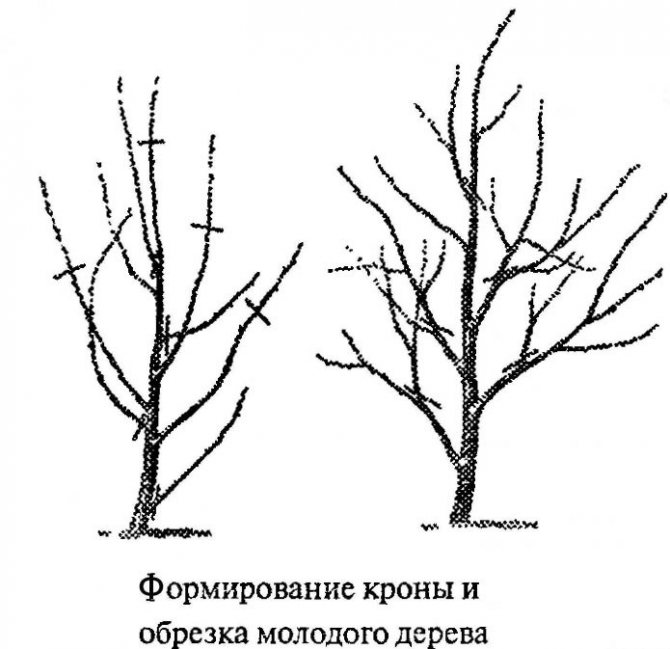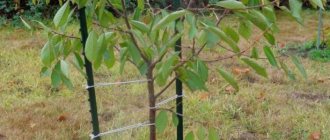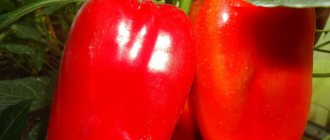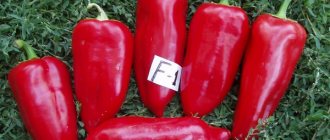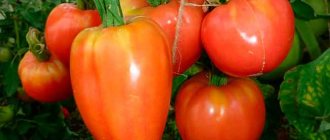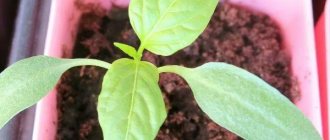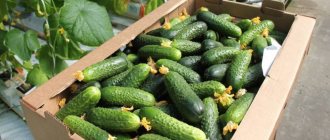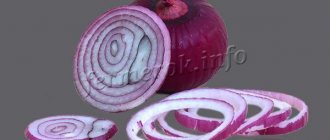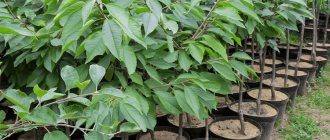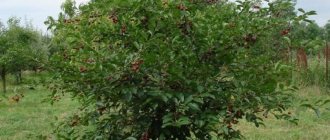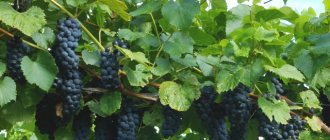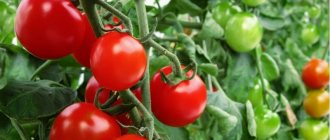Description of the variety Malyshka
The baby is one of the best bush cherries in terms of beauty, yield and berry taste. The variety was bred in Saratov at the end of the last century. Slightly spreading bush, 2–2.5 m high, begins to bear fruit as early as 3–4 years. For its compactness and early maturity, the variety got its name. On the contrary, Malyshka's harvest is not "childish": the tree is literally hung with large berries. One plant can be harvested 15–20 kg.
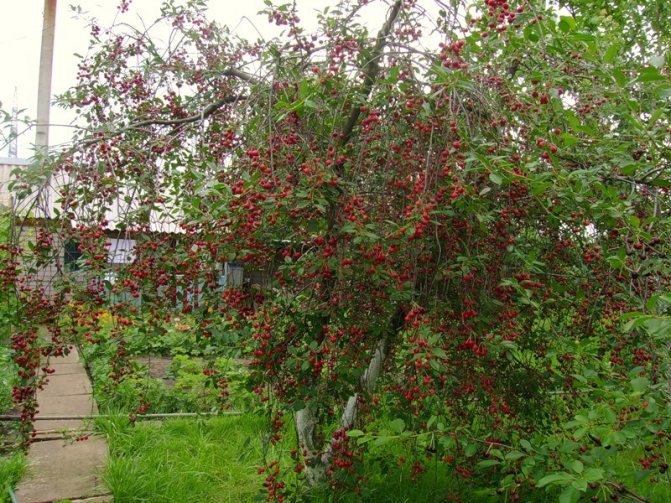
A low bush of arched shoots covered with large berries
Biological features of the variety:
- fast-growing bush with a spherical crown, thickened shoots, arched, brown bark;
- leaves are dark green, large, obovate, that is, the narrow side of the leaf is attached to the petiole, and the wide side "looks" out;
- flowers are large, white;
- berries are dark red, slightly flattened, sweet and sour taste.
The baby is self-fertile or partially self-fertile, so you should not wait for a rich harvest by planting one tree. It is well pollinated with cherries and any self-fertile varieties, for example:
- Youth;
- Turgenevka;
- Lyubskaya and others.
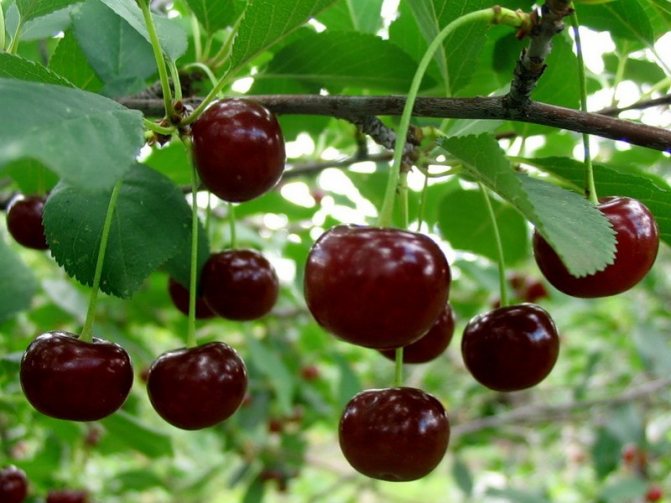

The berries are large, dark red, slightly flattened
conclusions
- Saratovskaya Malyshka is a low-growing, high-yielding variety, adapted for cultivation in the regions of the Volga region and central regions of Russia.
- Cherry is unpretentious, requires only regular pruning and timely watering in dry summers.
- The palatability of the fruit is rated as 4.4 points out of 5 possible. The taste of cherries is sweet and sour, rich, the pulp is very juicy. Due to its dense skin, it is well transported, but not stored for more than 2 weeks.
- Saratovskaya Malyshka is an early ripe variety, the berries can be picked by the end of June.
- Cherry lives for 15-16 years, grows in 3 years and begins to bear fruit by 3-4 years. Under favorable conditions, one tree gives up to 25 kg of fruit.
Advantages and disadvantages of the variety (table)
| Dignity | disadvantages |
| early ripeness, the first berries ripen at the end of June | self-fertility, pollinating varieties are required |
| compactness, spherical crown | tendency to thicken, need to be thinned every year |
| excellent taste, berries are large, the pulp is easily separated from the stone | average strength of berry attachment to the stalk; in windy weather or a thunderstorm, unripe cherries can crumble |
| high winter hardiness | location of roots close to the surface, require shelter for the winter |
| coccomycosis resistance | susceptibility to pests, the plant attacks aphids, weevil, cherry moth |
Cherry Baby: preparing for winter
For Saratov cherries, Cold Babies are not a problem, even the kidneys do not freeze. However, preparatory work for the winter period is still required.
To begin with, they protect the trunks of immature trees from rodents. As a protective material, you will need burlap strips from old tights. They are used to bandage the trunks. Also for these purposes, plastic bottles (put on the trunks) or wire mesh (wrapped around the barrel) can be useful.
The protective structure is removed when the snow begins to melt; not later, so as not to undermine the bark.
In the fall, trunks with skeletal branches are whitened to prevent winter burns of the bark and for immunity to pests.Bleached with a lime solution (a small amount of copper sulfate is added to the solution - 10 g / 1 bucket).
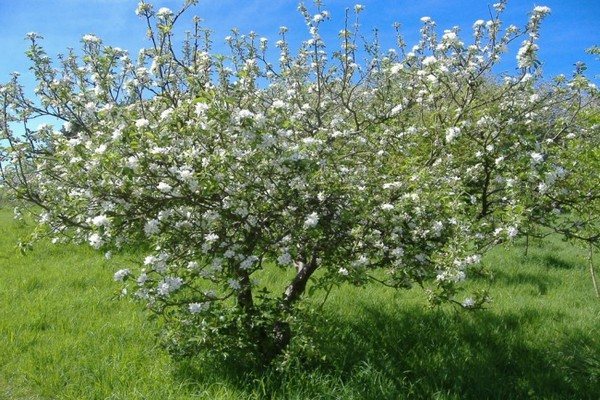

Landing features
In order for the cherry to grow healthy and produce an excellent harvest every year, you need to choose a good seedling and plant it according to all the rules.
Landing dates
Saplings are sold in spring and autumn, respectively, then you have to plant cherries. In the spring, so that the bush has time to get accustomed to the onset of hot days, you need to plant it before budding in the trees, when the earth has just thawed, but no later than mid-May. However, early autumn is considered the most favorable period. The seedling should have at least a month before frost in stock, so that it takes root, gets stronger and gets through the winter well.
In any case, cherries should be planted in the evening or on a cloudy day. Calm weather is desirable, gusts of wind will quickly dry the roots and can break the branches or stem of a young plant.
Pick-up location
We choose a sunny plot for Baby, in the shade its shoots will be thin, weak and will not give a good harvest. Also, it should not be planted in the lowlands, the groundwater must be at a depth of at least 1.5 m from the soil surface.
Sapling selection
If you want to get a real Saratov baby, then follow her to the fruit nursery. On the market, you run the risk of buying shoots from which a lean tree will grow, or even not Baby at all. But even in the nursery, the right to choose remains with you. The best planting material is an annual seedling with a well-formed root (at least 30 cm in length) and a lignified stem. If the roots are dry, soak them in water for 3-4 hours before planting.
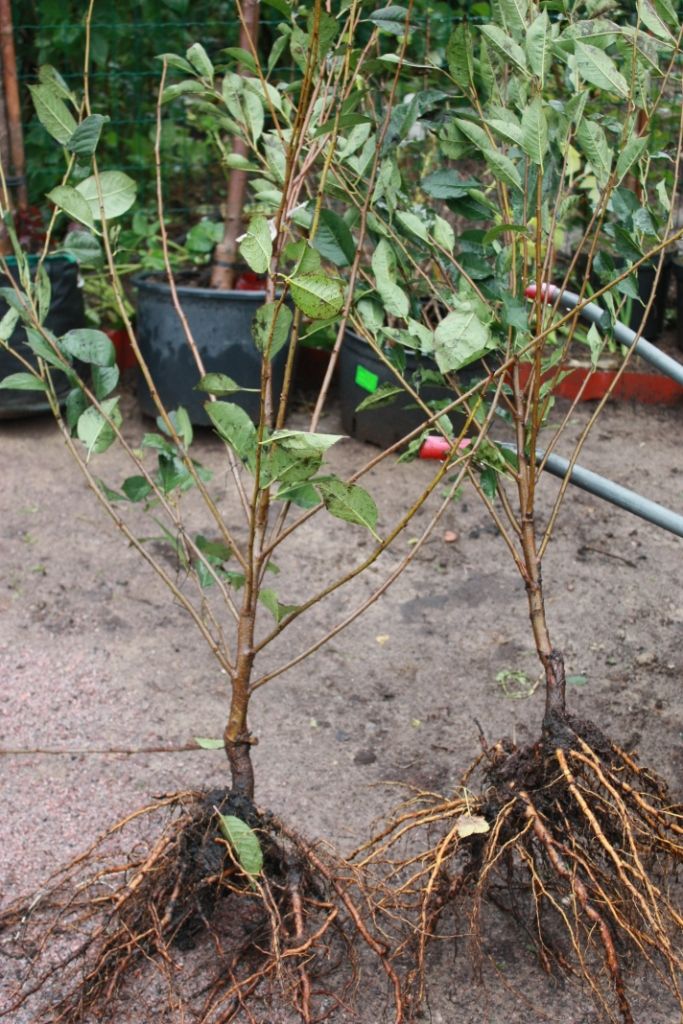

The seedling has a well-developed root and a lignified trunk
Planting pit preparation
The baby is unpretentious, but grows better on fertilized and loose soil. The size of the planting pit depends not only on the size of the root system, but also on the fertility of the soil. The larger it is, the more organic matter (humus) can be added to it. On black soil, there are enough holes 60 cm in diameter and 40-50 cm deep, on poor soil - 80 cm in diameter and 60 cm deep.
Landing
- Digging a hole, set aside the fertile soil layer (top 20-30 cm) separately.
- We drive a peg about 1.5 m high into the finished hole. The seedling tied to it will be able to withstand strong winds, the trunk will not bend. The peg should not shade the trunk of the cherry, so we place it in the center of the hole, slightly shifting it to the north side.
- Mix the top fertile layer with humus or compost in a 1: 1 ratio, also add 0.5 liters of wood ash. Fresh manure and lime must not be added! Roots can get burned.
- We pour the prepared soil mixture with a mound on the bottom of the planting pit.
- Install the seedling and straighten the roots over the mound. The tree must be planted exactly at the same depth at which it grew before transplanting, that is, we place the root collar at ground level.
- We fill the roots with the remaining soil: first fertile, and on top - taken from the lower layer.
- We make a hole with an earthen roller, the diameter is about 1 m.
- Pour 2 buckets of water.
- We mulch the soil with sawdust, straw, peat or cut grass.
- We tie the cherry to the support (peg).
Saratov baby is self-fertile, so it must be planted together with seedlings of other varieties or near fruiting cherry plantings... The distance between trees is 1.5–2 m for dwarf varieties and up to 3 m for tall ones.
Growing
Cherry is a heat-loving and sun-loving plant. Although it tolerates frost well, in the conditions of a short and rainy summer, the fruits ripen poorly, and the tree weakens.
Planting dates depend on climatic conditions. In the south, it is preferable to plant seedlings in the fall, somewhere in the middle of October. 2 months before the onset of cold weather, the cherry has time to take root and tolerates winter well. In more northern regions, it is better to plant the plant in spring, so that the seedling has time to grow ripe wood before winter.
Read more: Hydrangea in Siberia planting and breeding care - Flowers365
Adequate heat and light are essential for harvesting. Cherry easily tolerates a short summer, since it belongs to the early ripening ones. But the lack of sunlight leads to a noticeable deterioration in taste. Accordingly, areas with cloudy and rainy summers are categorically unsuitable for cultivation.
The variety is zoned in the Lower Volga region. Its cultivation is allowed in the central regions. The main criterion in the latter case is the winter cold. If the temperature drops below -30 C, it is better not to plant the hybrid. Firstly, in such frosts, the kidneys freeze. Secondly, the root system is damaged, since in cherries it is located close to the surface of the earth.
Neutral soils are most suitable for cherries. It grows well on chernozem soils, floodplain loams, sandy loam soils, chestnut soils. Since the root system of a tree is superficial, the structure of the soil must be loose and breathable in order to provide oxygen access to the roots.
The second requirement is the water table. The permissible level is 1.5 m. With higher groundwater, it will be necessary to organize drainage, since too high humidity leads to rotting of the roots.
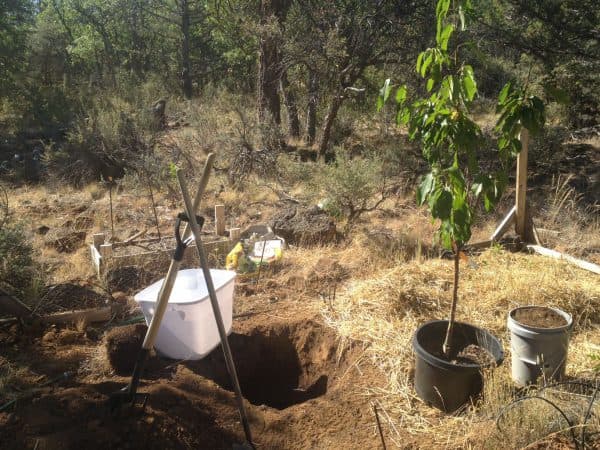

You need to choose not only the soil, but also the planting site. The baby cannot stand the shade; for the rapid growth and ripening of such a mass of berries, she needs sunlight.
With a little shade, the tree will grow, but its branches will be thin and weak, as they will stretch towards the illuminated area. Berries in such cases are tied only in sunlight, usually at the ends of the branches. Accordingly, the harvest will be much smaller than the cherry can give.
Landing
Cherry planting is carried out in the usual way. It is recommended to purchase a seedling from Saratov Malyshka in the nursery. With hands, there is a very high probability of buying shoots. The best option for planting is an annual seedling with a good root - at least 30 cm in length. You also need to pay attention to the bark: the stem should already be lignified.
Cherry pits should be prepared in advance. If planting is planned in the spring, then the trench is dug and prepared in the fall. If in spring, then the pit must be prepared at least 3 weeks before planting.
- The dimensions of the trench are determined not so much by the root system as by the density of the soil. On loose light earth, it is enough to dig a hole with a diameter of 60 cm and a depth of no more than 50 cm.If the soil is clayey and does not conduct water well, then a trench is dug with a diameter of 80 cm and a depth of 60 cm.
- When digging up, the top fertile layer of the earth is immediately set aside. Then it is mixed with compost or humus in a 1: 1 ratio and 0.5 l of wood ash is added. The rest of the soil can be used for household needs.
- The prepared soil mixture is put back into the pit and poured with 2 buckets of water so that the soil settles and compresses.
- Before planting, the soil is partially removed from the prepared pit, forming a mound at the bottom of the trench. A support peg with a height of not more than 1.5 m is installed in the pit.
- The seedling is placed in the center of the mound. They spread the roots and gradually cover them with earth, making sure that the space between the roots is evenly filled with soil and no voids arise.
- When the tree is half covered with earth, half a bucket of water is poured out, and they continue to fill the hole with soil. If there is not enough soil mixture, the infertile remaining soil can be put on top. The root collar of the seedling should rise 5–6 cm above the ground level.
- The earth around the trunk is compacted. The seedling is tied to a peg. Then the plant is watered with 2 more buckets of water and the trunk circle is mulched.
- It is recommended to immediately form a groove around the trunk along the diameter of the crown of the tree. This makes it easier to water the plant.
Baby Care
Cherry Malyshka belongs to the non-capricious varieties, but nevertheless, some care is simply necessary. Your efforts in the future will be the key to rich harvests for many years.
Watering
In the first year after planting, the soil under the cherries must be kept loose and constantly moist. In subsequent years, before the beginning of fruiting, the plant needs to be watered 3 times per season: at the end of June, at the end of July and during the period of leaf fall. Watering rate - 10 liters per bush. And the fruiting tree is moistened during the budding period, during the growth of the ovaries and in the fall, when the leaves begin to crumble. An adult baby bush already requires 15–20 liters of water.
Cherry dressings
Top dressing is applied to the near-trunk circle, more precisely, into a groove made along its perimeter. The diameter of the circle is equal to the diameter of the crown, the depth of the groove is 20–30 cm. This furrow is first watered: under the young cherry - 10 liters, under the fruiting one - 20 liters. When the water is absorbed, liquid or dry dressings are applied, humus or manure is laid and the soil is leveled.
Saratov baby grows and bears fruit well for 15-16 years. Seven-year-old cherries and older are fed after a year. Manure is applied every 4 years, lime every 5 years (400 g per plant).
Dosage and composition of fertilizers (table)
| Terms of introduction | Top dressing composition and dosage |
| 1 year after planting | in spring: scatter 80-100 g of urea on the near-trunk circle |
| 2 years after planting | in spring: dissolve 15 g of ammonium nitrate or 10 g of urea in 5 liters of water |
| 3 years after planting |
|
| After 4 and 5 years | in spring: pour with ammophoska solution (30 g per 10 l of water) |
| After 6 years |
|
Video: feeding an adult fruit tree
Cropping Baby
The variety is prone to crown thickening. If you do not prune every year, then long branches will grow on the Baby with buds only at the ends, illuminated by the sun. The rest of the trunk will be completely bald. In order not to run the cherry to such an extent, you need to cut branches every spring that:
- dried up;
- grown near the ground, they are usually underdeveloped, short, curved, since little light penetrates to them;
- interfere with each other: they cross, intertwine, rub, etc .;
- interfere with you, for example, hang over paths, a neighbor's garden, etc.
We cut the branches into a ring, that is, at the trunk itself, if you leave a stump, it will dry out and fall off, forming a hollow. After such a pruning, the crown will become much less frequent. Now you can take a closer look at the branches of the second order, departing from the main, skeletal ones. It is necessary to remove those that grow inside the crown or vertically upward.
We also cut out the root shoots. If the cherry is already old, sick, the bark is cracked, covered with moss, then it's time to think about a “substitute”. It can be one of the young plants that appeared as a shoot. Typically, these shoots take over all the properties of the mother plant. But it's better to be convinced of this, so let one of the shoots grow to the first berries. If they match the Malyshka variety in color, size and taste, cut down the old cherry.
Video: pruning young cherries
Preparing Baby for Winter
- In September, we loosen the trunk circle, apply fertilizers, do water-charging irrigation (10 liters for a young tree and 20 liters for a fruiting tree). Protecting the roots. In young cherries, they are very close to the soil surface and can freeze out. Therefore, we fill up the entire near-trunk circle, from the trunk to the periphery of the branches, with a layer of mulch 6–8 cm thick (foliage, sawdust, peat, grass, spruce branches, etc.).
- In October, we wrap the trunks from the ground and to a height of 1.5 m with sacking, any non-woven material, tie them with spruce branches, cover them with straw. We cover young seedlings entirely by tying the branches together.
- In winter, if there is an opportunity to visit the garden, we scoop up snow to the Baby, trying to cover her completely with a snow cover. At the same time, we do not touch the branches, in the cold they become fragile.
The variety is winter-hardy, but it is better to take care of a safe winter than to make the Baby fight for survival on her own. The bark of cherries does tolerate frost, but the roots and buds can suffer in severe winters.
How to choose cherry seedlings Baby
Choose cherry seedlings Baby - with responsibility. The most ideal option is to find nurseries or specialty stores where you can buy one-year-old seedlings, as they will take root better than others. One-year seedlings should be about 1 m in height, on a seedling - from 8 to 10 branches, roots up to 0.25 m long. There should be no spots, growths, thickenings, scratches and broken branches on the roots and trunks.
The vaccination sites should be carefully inspected. They are higher than the root collar by about 5-15 centimeters. This is where the trunk is slightly curved.
You can arrange a small test for elasticity and quality. The branches and roots of the best seedling are so elastic that they do not crunch when bent into rings. If there is a crunch, then the plant is overdried, and you should not buy it.
As mentioned above, the Malyshka cherry variety needs pollinators for an excellent harvest. When purchasing this variety, do not forget to purchase suitable pollinator varieties right away.
The most common and dangerous diseases (table)
| Name of the disease | Signs of illness | Control methods |
| Coccomycosis |
|
|
| Moniliosis |
|
|
| Fruit rot |
|
|
| Scab |
|
|
Photo gallery: signs of different diseases
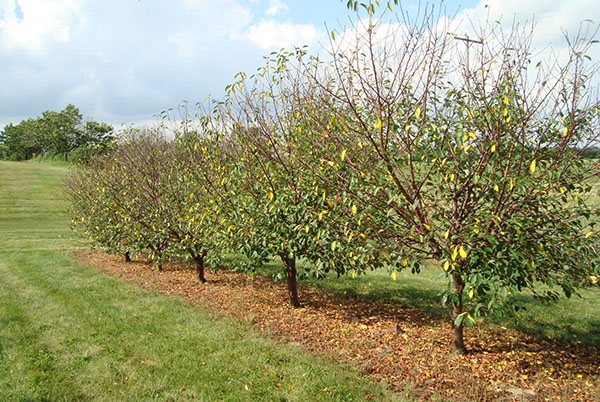

If damaged by coccomycosis, the branches begin to dry out
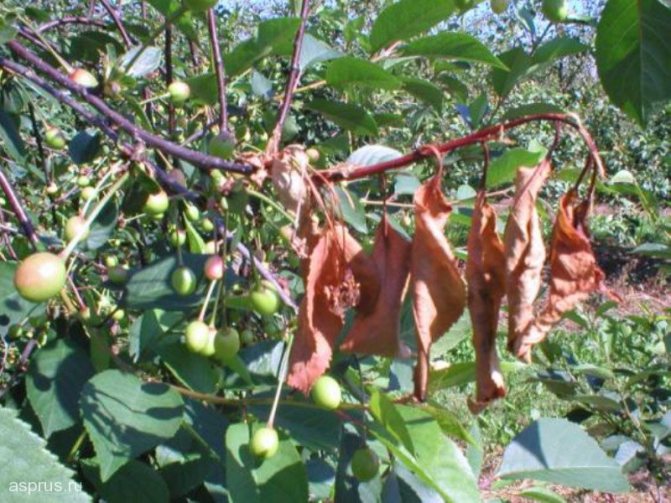

Leaves and branches look burnt when infested with monillosis
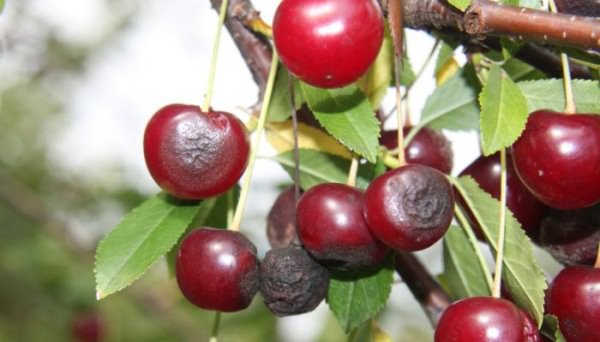

Brown, rapidly growing spots are a sign of fruit rot
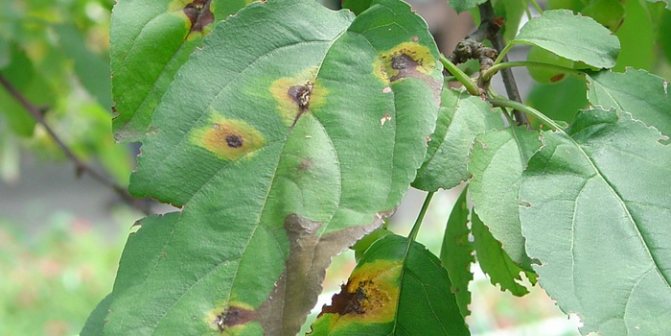

Olive brown velvety spots are visible on the leaves, which is a sign of scab
Gardeners reviews
We bring to your attention reviews of the Malyshka variety.
Anastasia, Moscow region: “I planted the Baby 7 years ago, and for 4 years now the cherry has been making me happy with delicious and beautiful berries. Their taste is pleasant, sweet and sour, I like to eat Baby right after harvest. It is not a hassle in cultivation - pruning and shaping are easy. For all the time, the cherry has never hurt. It is also well suited for winter storage. "
Alexander, Saratov: “I planted the Malyshka variety on the recommendation of a gardener friend. I will not say that I am delighted with this cherry. The fruits are too small, I like the Miracle cherry better. The taste is C grade, the yield is average. And last year the bushes got sick with rust - half of the berries died. "
Cherry pests (table)
| Pest | Description | How to fight? |
| Cherry aphid | small black insects settle on the back of the leaf in large colonies |
|
| Cherry weevil |
| Immediately after flowering, we spray with Karbofos, Aktelik, Fufanon or Rovikurt (according to the instructions). |
| Cherry sawfly | flying black insect lays leech-like larvae that feed on leaves | We process with Aktara, Inta-Vir, Iskra (according to the instructions). |
| Cherry shoot moth |
|
|
Photo gallery: the main pests
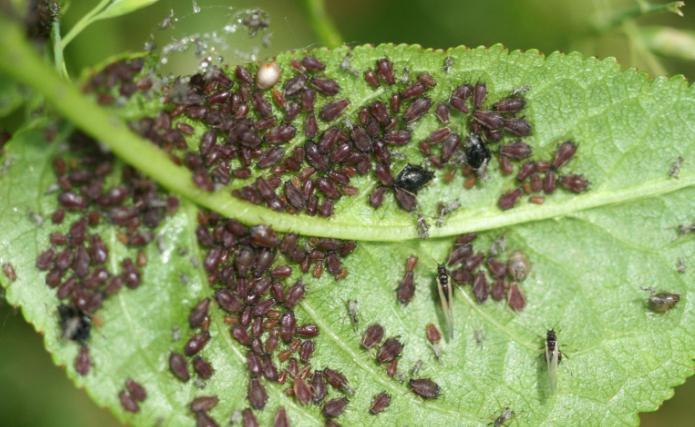

Small black insects breed on the back of the leaf
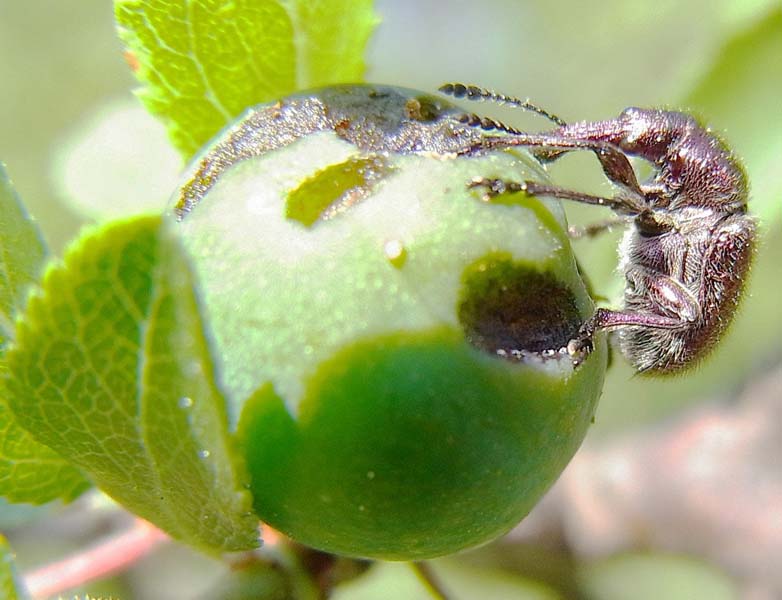

The beetle gnaws an unripe berry and lays eggs on the bone
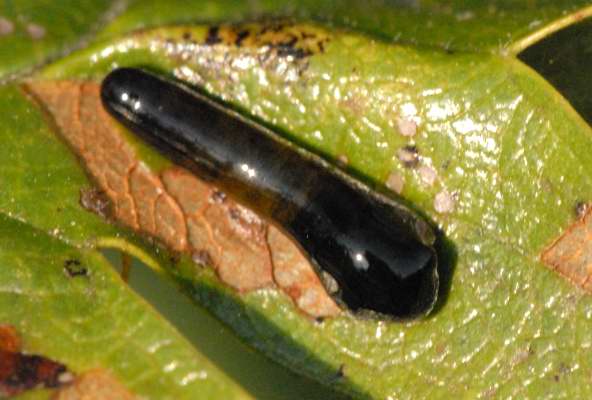

Leech-like larvae eat leaves
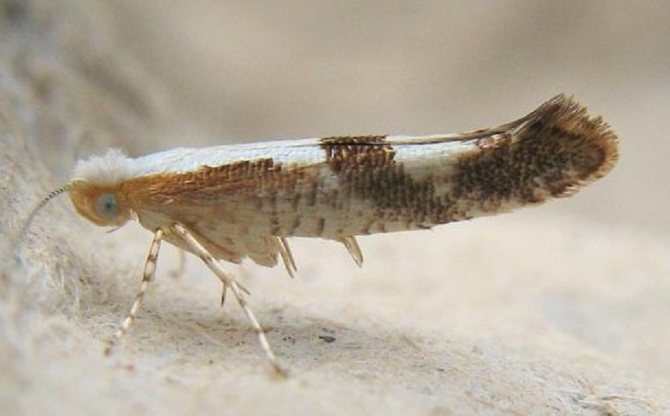

The butterfly lays its eggs in the cracks in the bark near the buds
How to properly fertilize cherries Baby
Cherries should be fed almost simultaneously with watering. From spring days to mid-summer, nitrogen fertilizers are indispensable. They contribute to the growth of green mass. You can use urea or ammonium nitrate (the amount is indicated in the instructions), organic matter in the form of mullein, chicken manure (in the form of infusion) or vermicompost is also suitable.
Fertilizer from mullein and chicken droppings is done as follows: you need to fill it with water (ratio 1: 3) and leave for a week.
The resulting ready-made infusion must be diluted ten times with water (1 l / 1 bucket of water), and from the litter - twenty times (half a liter / 1 bucket of water).
The diluted composition is irrigated at the rate of 1 bucket / 1m2.
An infusion is made from vermicompost at the rate of 3 glasses per 1 bucket of water. Insist 24 hours. Without dilution, watered as well.
This method is suitable for 1st and 2nd feeding. When the crop is harvested, nitrogen fertilization is no longer required. For the 3rd and 4th feeding, superphosphate is required. Check the dosage on the package.
Superphosphate can be replaced with ash at the rate of half a liter per 1m2.
Fertilizers are applied in three ways:
- Spread fertilizer evenly over the diameter of the trunk circle and slightly loosen the ground.
- Small grooves are made in a circle, starting from a half-meter radius. Fertilizers are added to them and sealed with a flat cutter. The most extreme groove should be 0.5 m further than the crown projection, since the size of the “Baby's” root system is quite large.
- Dissolve fertilizer in water and water.
In all three cases, after fertilization has been applied, the plants are watered.
Some additional feeding guidelines are as follows:
- The cherry tree is not fertilized for 2 years from the moment of planting;
- You should do without dressing in the case of an annual growth of shoots of more than 0.5 m;
- Remember that an overfed tree does not tolerate the winter cold;
- Organic fertilizers (in the form of manure or compost) are added one bucket per square meter for about 1 p. / 3-4 years;
- Once every four years, lime is added along the near-stem diameter (0.4 kg per 1 m2);
- If the tree was originally planted in acidic soil, then every year the acidity indicators in the diameter of the trunk circle are determined. In case of increased acidity, it is corrected.
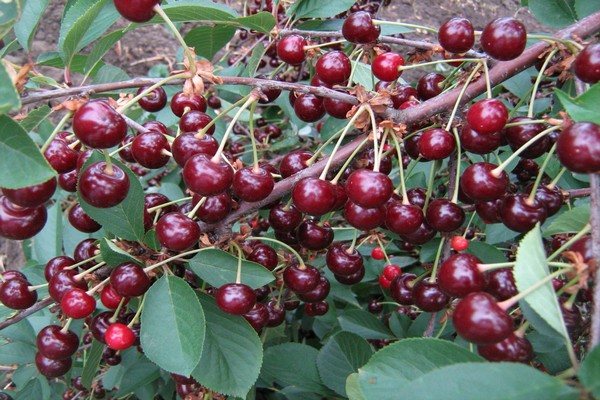

Harvesting and processing
The Saratov baby is a universal fruit. The berries are easily torn off the branch, their average weight is 4–6 g. The pulp is juicy, aromatic, sweet with sourness.Cherries can be stored for several days in the refrigerator and transported without loss of marketability, which makes the variety the best option for selling, for example, on the market.
Good separation of the pulp is another plus. It is recommended to make homemade cherry preparations after removing the seeds that are capable of releasing hydrocyanic acid.
Jams, preserves are cooked from the pulp, candied fruits are made. Cherries are dried and used in a mixture with other dried fruits to prepare compote. The cherry juice makes a delicious homemade wine. In addition, tinctures and liqueurs look very beautiful and drink softly. The berry can be frozen together with the stone.
Duke Wonder Cherry
This hybrid was obtained by crossing the cherry Valery Chkalov with the Griot Ostheimsky cherry. Among the dykes common today, this variety is closest to the sweet cherry (according to the characteristics of the tree and leaves). Its one-year-old shoots are powerful, thick, like those of a sweet cherry; the leaves are large, but at the same time dense, like those of a cherry.
This hybrid bears fruit on bouquet branches (like cherry), which cover a two-year growth. The yield is high, the fruits hang in dense garlands
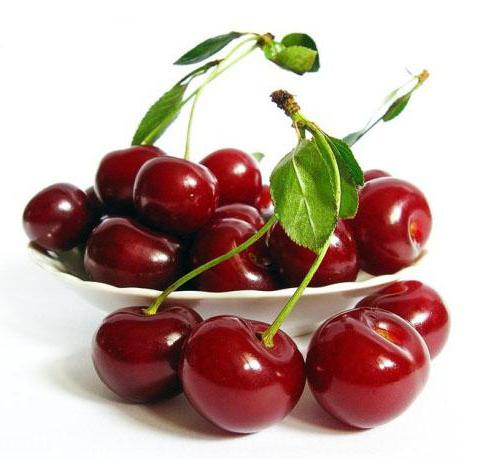

Zhukovskaya
This species has the ability to self-pollinate. An increase in yield is possible when planting a bush next to another variety. Fruit ripening occurs at the end of July. The fruits are large, dark, with excellent taste. Even under the most unfavorable conditions, it retains a yield of up to ten kilograms. The variety is resistant to disease and frost.
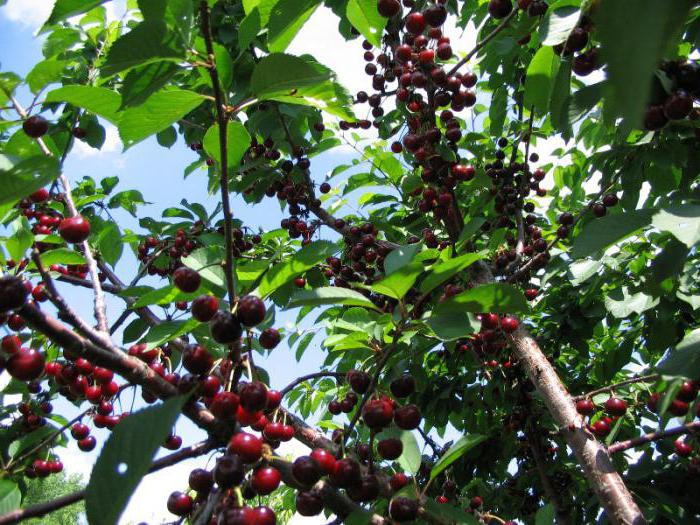

Characteristics of the tree
The baby differs from other cherries in the small size of the tree, early fruiting and large berries. This hybrid, resistant to unfavorable weather conditions, can be grown in all areas of the Central region of Russia.
Dimensions and appearance of the tree
The baby is a compact tree that grows up to 2-2.5 meters in height. Cherry has a spherical, dense crown, spreading branches. The bark is smooth, grayish-brown in color. The leaves are dark green, ovoid, with a sharp end and serrated edges. Bouquet shoots appear white, large, single or collected in inflorescences (3 pieces each).
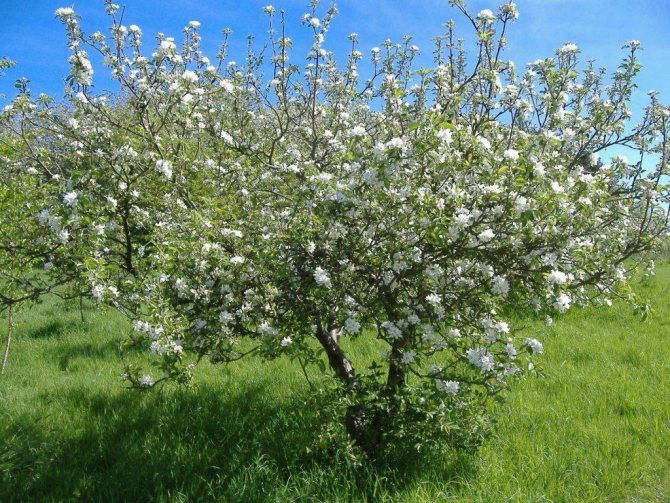

Fruits are round, bright red, with shiny, smooth skin and reddish, juicy flesh. The weight of one berry is 5 grams. Taste - like cherry - sweet and sour. There is a small stone inside the berry, it separates well from the pulp.
Frost and drought resistant
Cherry Malyshka has medium frost resistance. Without shelter, it can withstand frosts of 10-20 degrees. In regions with a more severe climate, the tree needs to be insulated for the winter. Cherries adapt well to all weather conditions.
During prolonged drought, it is recommended to water the tree once a week (1-3 buckets of water).
Disease immunity
The Malyshka cherry has good immunity, but in rainy and cool weather, a tree growing on poor soil can become infected with a fungal or viral infection. To prevent diseases, preventive measures are taken (the trunk is whitewashed with lime, the foliage is sprayed with solutions of fungicides).
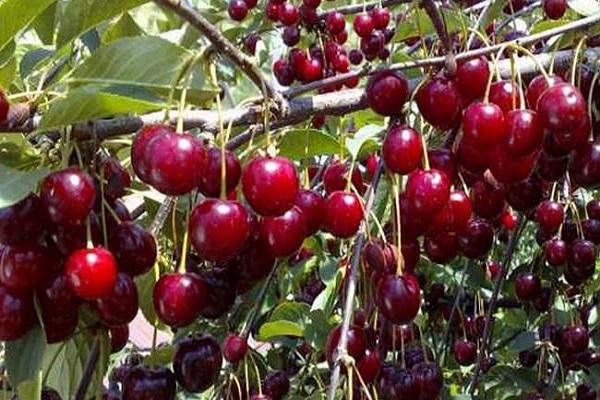

Pollinators, flowering period and ripening times
Cherry Malyshka blooms in mid-May, and berries ripen in the second decade of June. It is an early, self-fertile hybrid. To obtain a higher yield, it is necessary to plant cherry varieties with a similar flowering period near Malyshka. The best pollinators for Saratov Baby: Turgenevka, Lyubskaya, Molodezhnaya, Nord Star.
See also
Description and characteristics of 17 dwarf cherry varieties, planting and care
To read
Productivity, fruiting
Cherry Saratovskaya Malyutka grows rapidly, and the first small harvest of berries can be harvested as early as 3 years. Weather conditions and top dressing affect the size and number of fruits. The average yield per tree is 13.5-15 kilograms. In a favorable year, the yield is higher. From one cherry tree aged 8-10 years, you can collect up to 25 kilograms of berries.
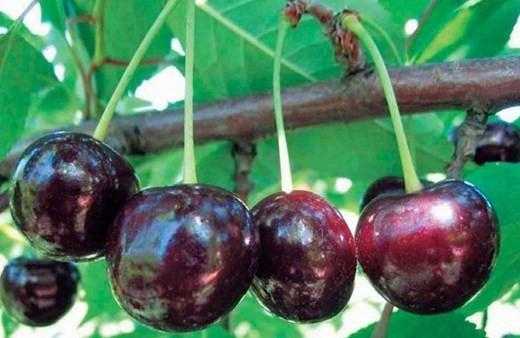

Where are berries used?
Cherry Saratovskaya Malyutka belongs to the table variety of berries. Ripe fruits are eaten fresh and sent for processing. Juices, preserves, jams are made from cherries. The berries are dried, frozen, canned. Cherries thin the blood, improve digestion, strengthen the immune system.

